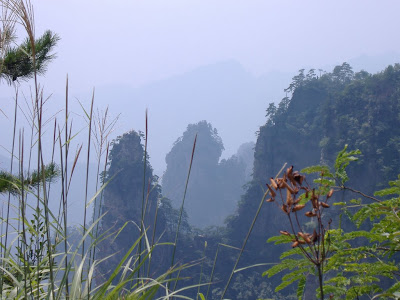
For ages the solid snowy chain of the majestic mountains Tien-Shan sparkling under the subeams in the horizon was the subject of thoughts and desires of many Europeans. This is, may be, the most remote, mysterious and, therefore, the most attractive mountains of the former Soviet empire. The untouched peaks, unknown gorges, no any settlements and roads. The life of locals is still like the life of their ancestors, which named their mountains «Tengri-Таg» – «Ghosts’ mountains». The Chinese reformed common name Tengri-Таg into the Tien-Shan that means «Celestial mountains». The first European that visited the Tien-Shan in 1856 was one of the biggest Russian researchers of the last century, Peter Semenov. Here he made discoveries in the field of geography and zoology, which had great significance and brought him acknowledgment, glory and courtesy title «Semenov-Tien-Shanskiy». At the beginning of the next century Italian prince, Chezare Borgeze, big adventurer, came to Khan-Теngri vicinity accompanied by two friends. Owing to the information reported by him, Gotfrid Merzbaher, the famous alpinist and geographer from Munhen was able to come to bottom of the Great Mountain of the Lord of the Ghosts by Inylchek gorge in 1902. However, the Tien-Shan remains the country, the most part of which is still waiting for its discovers. 800 km wide and 2800 km long, 1500 km from which fall on the Chinese territory, it lasted as a whole unit from Uzbekistan until Mongolia. The part of the Tien-Shan belongs to Kazakhstan: northern ranges – Ketmen, Zaili Alatau, Kungey, Terskey and Kirghiz Alatau; western ranges – Talass Alatau, Karzhantau, Ugamskiy and Maidantalskiy; small part of the Central Tien-Shan – Meridional range Saryzhaz and Tengri-Tag. The peak of victory is the highest top of the Tien-Shan (7439 m), discovered in 1943 and named after Soviet Army’s victories in the Great World War fronts. It is located in the south of one of the main ranges of the Central Tien-Shan – Terskey Alatau. There is the border between Kazakhstan and Kirghizstan. The Peak of Victoria is located to the south Khan-Tengri (6995 m), the highest mountain peak in Kazakhstan. The main highest ridge of the Tien-Shan – Zaili Alatau is 350 km long, 30-40 km wide, 4000 m of the average height. The slopes of Zaili Alatau are disjointed by many dried up beds and cut by numerous rivers. The sharp peaks alternate with the intermountain plains. In the central part of Zaili Alatau under the influence of external natural forces the rocks were destroyed and sharpened and mountain gorges here are already narrow and scrap. Ketmen – one of the middle mountain ranges is located in the eastern part of the Tien-Shan. Its length is 300 km within Kazakhstan, 50 km wide; 3500 m is its mean height. Hillside of Кetmen is disjointed by riverbeds of Ily watershed. Ketmen through Kulaktau interlocks with the Kungey Alatau range. Only the range with the northern slopes of its north-eastern part belongs to Kazakhstan territory. The medium height of this mountain range is 3800-4200 m. Ketmen’s slopes are flat, the peaks are leveled. Kirghiz Alatau is a large mountain system. Its highest peak is the Western Alamedin (4875 m). In Kazakh part the mountain height doesn’t exceed 4500 m. The northern slopes represent collapsed and destroyed mountains. Kazakhstani part of the western Tien-Shan begins from Talass Alatau (around Taraz city). The north-western slopes of Ugam range lie further and northern ones of Manas peak – all of them are considered to be Kazakhstani territory. Kazakhstani part of Talass Alatau are Jabagly mountains, having divided into two mountain ranges, create watershed of the Аksu-Jabagly rivers.

The Karatau range lies in the western outskirts of the western Tien-Shan. It is the only mountain range that lays cramp on the territory of Kazakhstan. It spreads in north-western direction for 400 km, its medium height is 1800 m. the highest point is Мynzhylky (2176 m). It lowers to the north-west and at the place of the Sarysu and Chu dry rivers merge passes to the highland. The north-western and south-western Karatau chines are divided by the intermontane valleys. A big stock of mineral resources was found in the territory of Karatau. They are used for manufacturing lead and zinc in Shymkent lead-zinc plant, and to provide the phosphoric raw material to Taraz chemical plants. The ores are obtained by cut-and-cover method. Karatau is the source of the building materials such as gypsum, cement and etc. that gives good profit to the state. In Kazakhstani part of the Tien-Shan there are 1009 glaciers, the longest one (about 13 km) is Korzhenevskiy’s glacier, descending from Talgar peak to Taushilik valley. The frost is widely represented in the Tien-Shan; the ice amount is counted by milliards of cubic metres. The Tien-Shan climate is severe, characterized by sudden change of the weather that is connected with closeness of the Takla Makan dessert. The snow line goes in the lower height, than in Pamir: the snow lies permanently, starting from 3200 metres. Many rivers flow by the Tien-Shan mountain spurs and by the intermountain valleys. The lakes in the mountains are so picturesque. The Lakes – Big Almaty and Issyk – appeared at the landslides during old enormous earthquakes. The Big Almaty Lake is not older than 2200 years old, аnd the Issyk Lake, almost fully discharged in 1963 by cloudburst flood, is more than 4500 years old. The Tien-Shan flora and fauna is rich and versatile. With the purpose of saving it the wildlife sanctuaries and national parks were organized such as: Аksu-Jabagly, Almaty, Ily-Alatau and others.
Imágenes: Vistas de las "Montañas de los espíritus", según los uygures, o las "Montañas celestiales", de acuerdo a los chinos

No comments:
Post a Comment